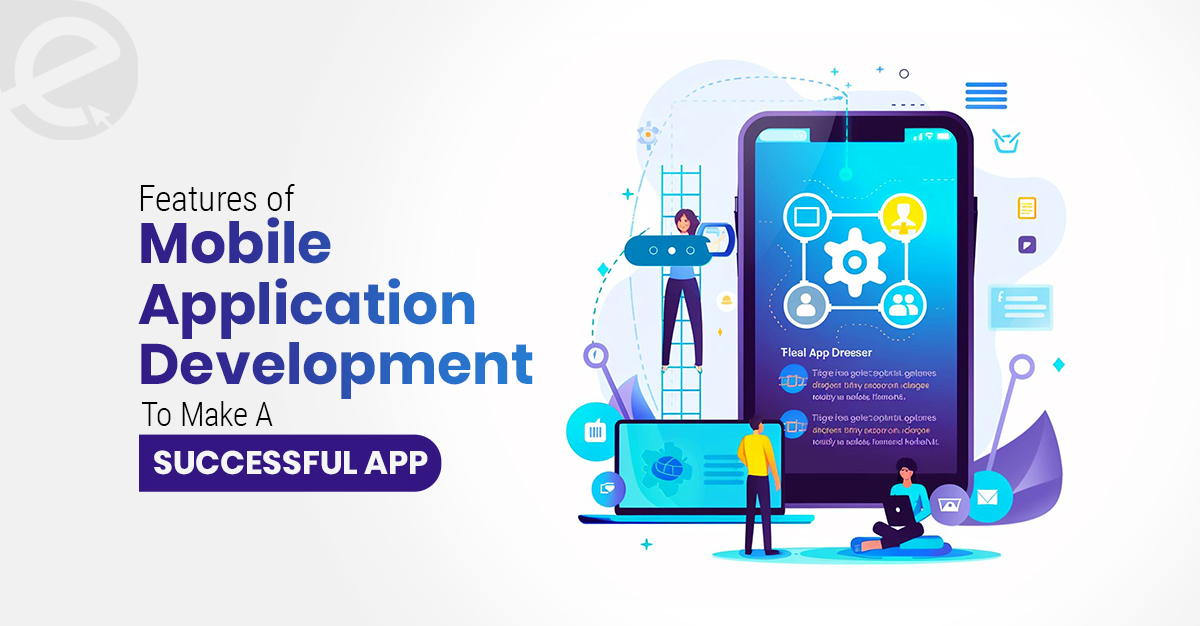
We Develop Websites Keeping Marketing in Mind
Must-Have User-Friendly Mobile App Features for Better Success Rate
 Apr. 30, 2025, 12:00 AM
Apr. 30, 2025, 12:00 AM- By Eclick Softwares and Solutions

A feature-rich app is a single app the users mostly prefer to solve their several needs, to do away with whirling between applications is the Super App. A good app, supported by user needs has an excellent user experience and features. Together with a unique app idea, a successful app is measured by great functionality, smooth experiences, and features matching the users' expectations.
Which Features Should Be Compulsorily Integrated While Developing A Perfect Mobile App?
Only after engaging the users and convincing them to use the app regularly, a mobile application can win audiences. These are the must-have mobile app features to make competent apps in any industry’s market.
1. Multi-Device Synchronization
With IoT’s popularity, multi-device synchronization is a critical feature that gives impetus to the mobile app and makes it more scalable. Real-time synchronization across multiple devices allows the users to work on the current file and access it from their own convenience.
2. Offline Capabilities of Mobile Apps
A mobile application working offline allows the users to access it when the internet connection is off. This mobile app feature enhances its overall scalability while expanding the app's user base.
3. AI Chatbot
The keys to tap the sales potential include refining customer services to perfection, faster resolution, and 24/7 availability. It is better done by AI chatbot integration to answer the user's repetitive questions. Chatbots even make customized suggestions faster than human minds, which improves engagement and retention rates. Through improved user interactions, the collected feedback even helps in improving the app accordingly.
4. Face Detection
Face detection feature, based on AI technology helps with biometric identification, verification, authentication, device control and security, monitoring attendance, and more. It meets the needs of modern users by taking security up a notch from device to app features.
5. Augmented Reality
Augmented Reality technology renders 3D content over real-world objects in real-time by using a mobile in-app camera. To improve the engagement level, AR technology delivers incredible experiences in different ways. To build AR-based applications easily, Android has launched ARCore and iOS has launched ARKit SDK to facilitate the developers with all needed tools for engineering unique experiences.
6. Voice and Image Search
Voice and image search is the in-app feature that has made products/services searching a breeze. Using AI and ML-based technologies, the users search for a product directly by uploading an image or by speaking. Through Image Recognition technology, the image search features in the app are enabled. AI Chatbot answers questions from the database to make the voice search feature work.
7. ChatGPT
ChatGPT helps to improve UX features and the overall mobile app success. ChatGPT app development done through a powerful NLP (natural language processing) engine helps in generating conversing with users in a close realistic and practical approach. ChatGPT can understand the user's intent and context along with the preferences for providing personalized and relevant responses.
8. QR Code Scanner
The QR code scanner's feature integrated into the mobile app improves connection with the users. QR code scanner tools help to scan any QR code and fetch the information encoded in the code. It is useful to access a website, download any apps, make payments, and even verify the users' identities.
9. Fraud Detection
Because of lots of malware attacks and cyber frauds, Fraud detection stands out as the highly advanced system to detect and prevent fraudulent activities like unauthorized transactions, fake identity, theft, and fake accounts on mobile apps. Using advanced algorithms such as Machine Learning (ML), Artificial Intelligence (AI), or blockchain technologies, Fraud Detection carefully detects the user's behavior as well as their location, devices, and biometrics. Once the system detects any suspicious activity, it flags the anomalous patterns.
10.Automated Responses
Automated responses are the pre-written messages the users automatically receive. It means the messages are the responses to the users' queries, triggers, and conditions. Automated responses are useful to welcome new users, confirm their placed orders, send reminders, provide feedback, and for various purposes.
11. Emotion Recognition
Emotion recognition technology even improves user experience by analyzing the user's facial expressions and voice tones or text sentiments for inferring their emotions. This Emotion recognition technology personalizes content, recommends choicest products, adjusts settings, or offers support.
12. Enable Sign Up
Sign-ups make the part of every application generally mandated at the first step. The users have to enter their personal information. However, when they can browse the app without having to sign up removes the first obstacle stopping them from browsing and trying new functionalities. Moreover, social sign-ups and sign-ups using phone numbers reduce the registration process.
13. Dashboard
The digital-age users prefer a single dashboard to find out their recent orders, the amount spent, loyalty points earned, and the offers/coupons in their bucket concisely. It's a feature that makes users happy.
14. Location Management
Users engage and convert when their searches are tailored to geographical location. Through Location management, businesses send personalized notifications customized to their location preferences. Combining the same with brick-and-mortar stores is helpful - the users receive relevant notifications from the online store while enabling their Geo-location services. Through Map Integration, the users can see where their orders exactly are and identify the office or warehouse.
15. Search Feature
Users can seamlessly get through their required products or services through a hierarchical app navigation structure. But searching through the in-app search feature, users can directly search. Convenience has much more demand, so the requirement for advanced in-app search is making it a breeze. The advanced search feature includes auto-suggestions once the users start typing, auto-correction, displaying cached keywords previously used to search, and more to make the content highly accessible.
16. Payment Gateway Integration
Users step back from abandoning the cart when they find their preferred payment option has been included. So, by adding multiple payment modes, most of the payment options are enabled in the commercial mobile apps. The options include Android Pay, Apple Pay, cash, and credit/debit cards, as well as third-party payment gateways such as PayPal, Stripe, and more.
17. Enable Reviews and Feedback
Adding a review submission feature enables the users to write reviews and give ratings. The app can be updated accordingly. In fact, negative reviews can carry a message to add value to future updates. According to research, 93% of respondents are likely to share feedback when a company explicitly asks for it. 97% of respondents take more interest in becoming loyal customers of the company when their reviews are implemented.
18. Including Analytics
Relevant data regarding user experience and expectations is important. App performance has to be constantly measured to find the areas of improvement - it is possible with Analytics.
With Analytics, a more personalized experience is created for users. Analyzing the ROI and tracking the app's progress is quite tough without the analytics. Using Analytics, there is an opportunity to come up with better offers and better update the app.
19. Social Integration
Integrating a social media sharing feature creates an everlasting impact. When the users log into a business app using their Facebook or Google accounts, then the business gets valuable access to their contracts. It helps the business to directly connect with active users on social media platforms.
20. Push Notifications
Push notifications keep the users engaged even when their phone is locked. Sending push notifications increases mobile app retention rates by 3 to 10 times. When a user receives a single push notification in the first week of downloading the app, it helps boost the retention rate by 71% over 2 months. The push notifications with CTA buttons deliver 40% - 60% better results. Compiled with Analytics, Push Notifications get more responses and actions from users.
21. Responsive App Design
A robust mobile app design according to the device's size and resolution is most valuable. A mobile app's responsive design feature resolves this issue and helps the application to adjust from a small smartphone to a large-sized tablets.
Developing a mobile application is a user-driven requirement for modern businesses. Mobile apps are necessary for brand awareness, sales purposes, brand awareness, and ROI improvement. A mobile app succeeds with a smooth and intuitive experience and is combined with essential app features like fast performance and secure payments. When advanced tools like AI-driven personalization and forward-thinking innovations like AR or IoT are added, the app is taken to the next level.
Related Blog
- By Eclick Softwares and Solutions
- November 21, 2025
10 Surprising Benefits of ...
Chatbots for websites deliver 10 hidden benefits. Enjoy 24/7 ...
Read More- By Eclick Softwares and Solutions
- November 13, 2025
How CLS Impacts Design Mo ...
Know why CLS holds greater weight for designers than develop ...
Read MoreSearch Blog...
Recent Posts
Eclick Services







